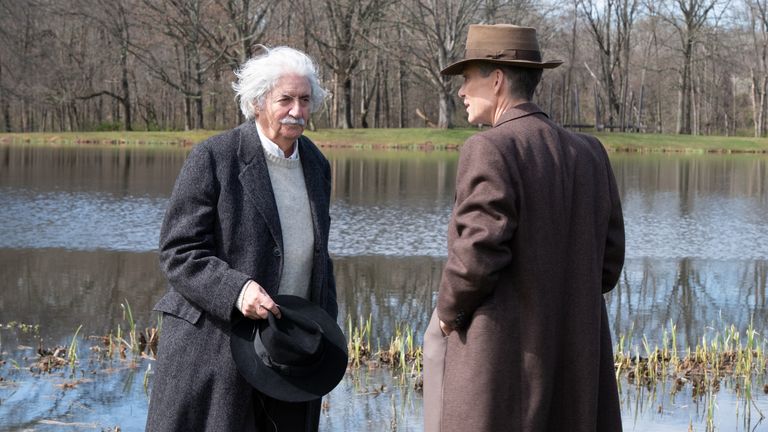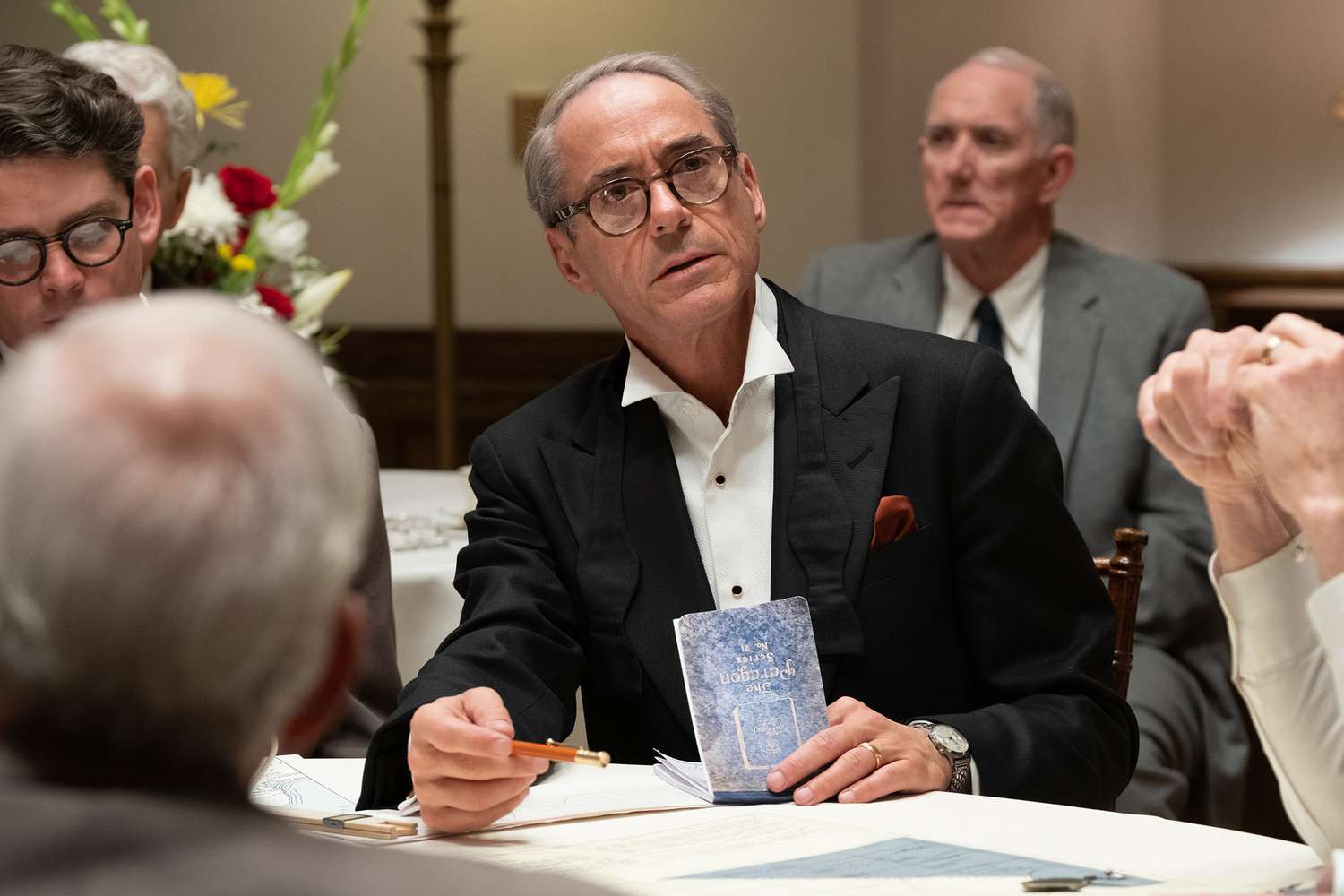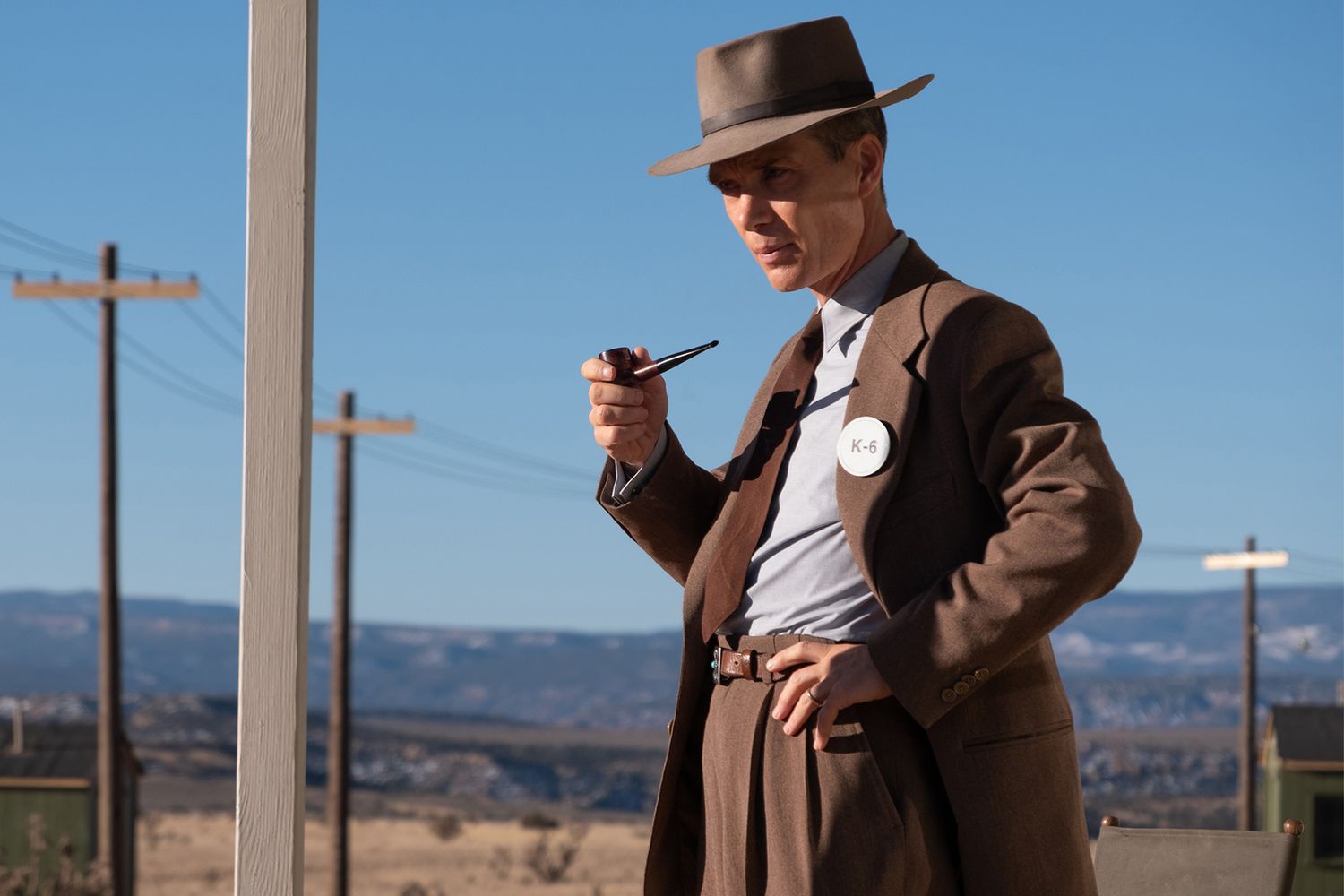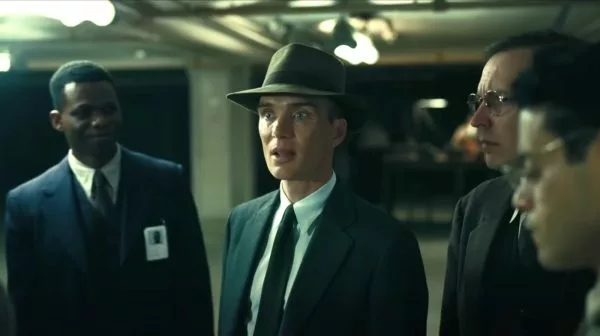CAST: Cillian Murphy, Matt Damon, Robert Downey Jr, Tom Conti, David Krumholtz, Emily Blunt, Florence Pugh
DIRECTOR: Christopher Nolan
Oppenheimer stands unapologetically cerebral, showcasing exceptional performances from its cast as they portray real historical figures in a story that reveals crucial details many viewers will encounter for the first time. Despite its grounding in reality, the film carries an immense and grandiose quality.
Throughout most of its three-hour duration, Nolan skillfully immerses the audience in Oppenheimer’s brilliant mind, granting us a glimpse of the world through the eyes of this renowned theoretical physicist. As a result, the narrative is frequently interwoven with mesmerizing visions of subatomic particles and cosmic phenomena.
In addition to this, Oppenheimer possesses the essence of a memory play or an exhaustive, rearranged biography. It transcends linear storytelling, similar to Nolan’s previous work, Tenet, effortlessly navigating through time and connecting events that span several decades in a logical yet non-linear manner.
Cillian Murphy, taking on the challenge, delivers an utterly captivating performance. Having collaborated with Nolan on multiple occasions, often in significant supporting roles, Murphy now showcases his leading-man prowess as he portrays Oppenheimer. His portrayal of the physicist, lost in contemplation over the complex problems of the 20th century, draws audiences in with the same intensity as the film’s awe-inspiring atomic explosions, making every frame of his thought process deserving of the grandest screen possible.
Murphy leads an exceptional ensemble of top-notch actors, shining brightly in their respective roles. Matt Damon infuses General Leslie Groves, the military head of the Manhattan Project, with movie-star charisma that masks his hidden motives.
Robert Downey Jr. takes on the role of Lewis Strauss, Oppenheimer’s rival in the struggle for control over postwar nuclear policy, utilizing his remarkable acting prowess to carve out a significant presence in the film. The scenes involving Strauss’ strategic meetings during the contentious 1959 Senate hearings, while vying for a cabinet nomination, stand apart from Oppenheimer’s perspective.
Marked by black-and-white color grading and Downey’s magnetic screen dominance, these moments provide a unique contrast. Witnessing Downey deliver such a robust big-screen performance is an opportunity not to be missed, especially considering the meta significance of Downey and Nolan collaborating on a film that explores the ambivalence of an inventor towards his groundbreaking creation, given their influential roles in the superhero blockbuster revolution.
The cast’s depth further includes notable performances from David Krumholtz, who recently captivated audiences with his poignant Broadway act in Tom Stoppard’s Leopoldstadt. Here, Krumholtz portrays physicist Isidor Isaac Rabi, adding a crucial perspective of Jewish experience to a movie where the protagonist, played by an Irish actor, constantly emphasizes the urgency of developing the atomic bomb before the Nazis. Rabi’s skepticism provides a counterbalance: “I don’t want decades of physics to culminate in a bomb.”
In the movie, we also encounter Albert Einstein as another Jewish critic of the supposedly anti-Nazi atomic bomb, portrayed by Tom Conti. Conti infuses the character with the demeanor of an aged legend who has witnessed the transformation of the world through his greatest accomplishment, the theory of relativity, in a way that leaves him disenchanted. As the film progresses, Oppenheimer begins to empathize with Einstein’s sentiments. After all, the atomic bomb wasn’t ultimately used to defeat the Nazis but to devastate Japanese civilians.
The Manhattan Project, much like many of Nolan’s past films, primarily featured a male-dominated environment. Among the critiques the successful director has faced throughout his career, the portrayal of female characters as “dead wives” has been particularly sticky. However, in this film, Emily Blunt’s portrayal of Kitty Oppenheimer defies such stereotypes. Despite the worldwide crises of the ’30s and ’40s, Kitty remains fiercely alive. She challenges the archetype of a “devoted wife” by openly expressing her frustrations with motherhood and dissatisfaction with politics. In her scenes with Murphy’s Oppenheimer, Blunt proves to be an excellent partner, grounding him when he gets lost in his thoughts and encouraging him to take a stand instead of passively letting history unfold.
Another prominent female character in the film is Jean Tatlock, portrayed by Florence Pugh. As a rising star among the older and more experienced cast, Pugh brings Oppenheimer a compelling blend of sexiness and political acumen, elements that have often been missing from Nolan’s previous works.
Tatlock, a dedicated communist, frequently attended party meetings alongside Oppenheimer, who was deeply disturbed by the rise of genocidal Nazism and sought to support the anti-fascist Republicans in the Spanish Civil War.
The film’s focus on political history adds to its timeliness, making it a summer blockbuster where characters engage in passionate discussions about labor unions and anti-fascist movements. While audiences might expect the climax to be the Trinity Test at Los Alamos (which indeed is spectacular), the film devotes its final hour to exploring the 1954 closed-door hearing where Oppenheimer’s security clearance is revoked due to his ties to communists.
Representing the broader McCarthyite era, these scenes illustrate how, despite the Allied victory over the fascists, the use of Oppenheimer’s atomic bomb empowered domestic reactionaries to betray those who contributed to their triumph. The film delves into complex topics like quantum mechanics and political history, areas where most viewers might not consider themselves experts. However, Oppenheimer adeptly explains these concepts in more creative ways than the exposition-heavy Inception or the chaotic narrative of Tenet. In one scene, when Oppenheimer meets Kitty, she asks him to explain quantum physics, and he uses atoms and their forces to illustrate the concept of matter’s illusory solidity.
In another scene, Kitty reveals how her second husband, a union organizer, died fighting fascists in Spain, demonstrating how a single tiny bullet could shatter the apparent solidity of her life. Oppenheimer experiences this firsthand in 1954 when people he considered allies and friends betrayed him for their personal gain.
The film’s study of physics is bifurcated into two disciplines: Oppenheimer’s expertise in theory and Josh Hartnett’s portrayal of Ernest Lawrence, who embodies the practical aspect.
While seemingly distinct, Oppenheimer’s many facets refract and reflect one another, much like atoms triggering a chain reaction or scientists building upon each other’s ideas to create something new.










